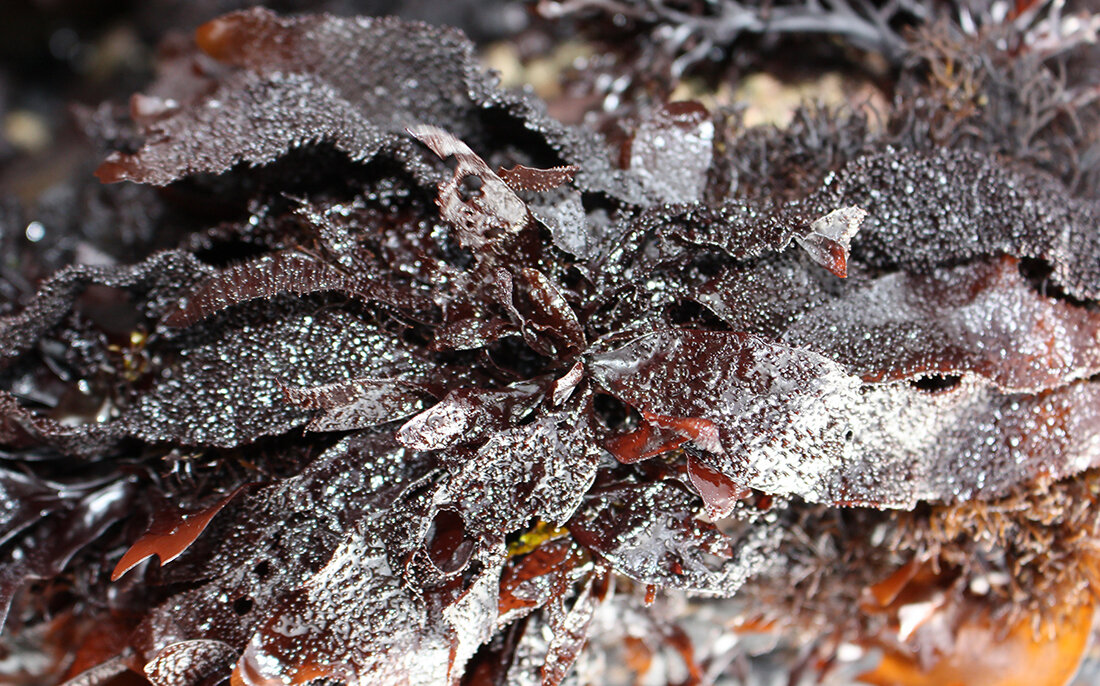California Kelp Identification
Most people know kelp as the stuff piled up on the beach or the stuff that snags you your line while rock fishing or tries to drown you while spearfishing. But to us California based spearfishermen, the kelp is home. It’s a habitat for some of our favorite critters, food for a lot of mollusks as well as a healthy and nutritious snack for humans. The pictures and cards below will give you a quick glimpse into the what you will find growing on the Pacific Coast Beaches.
Bull Kelp
(Nereocystis luetkeana) is an annual alga found off the Pacific coast of North America and Asia. On the West Coast of North America, bull kelp ranges from the Aleutian Islands, Alaska to Point Conception, California. Along the California coast, bull kelp becomes the dominant kelp north of Davenport, Santa Cruz County. Bull kelp attaches to rocky substrate in depths of 4 meters to 22 meters (13 feet to 72 feet).
Giant Kelp
(Macrocystis pyrifera) can be found worldwide in nearshore temperate oceans. On the West Coast of North America, this perennial kelp ranges from Southeast Alaska to Baja California, Mexico. Along the California coast, giant kelp is abundant south of San Francisco, San Mateo County and generally grows attached to rocky substrate in depths from 6 meters to greater than 30 meters (from 20 feet to more than 98 feet).
Sea Palm
(Postelsia palmaeformis) is an annual kelp that ranges from Hope Island, British Columbia to Point Buchon, San Luis Obispo County, California. Sea palm resides on rocky surfaces and mussel shells in mid- to high intertidal areas exposed to heavy wave action. Sea palm may not be harvested recreationally.
Grapestone or Turkish Wash Cloth
or Turkish washcloth (Mastocarpus papillatus) is a perennial red alga that ranges from Vancouver Island, British Columbia south to Cambria, San Luis Obispo County, California. Grapestone can be found on rocks in the mid- to high intertidal area.
Bladderwrack
(Fucus distichus) is a perennial brown alga. On the West Coast of North America, bladderwrack ranges from the Bering Sea and Aleutian Islands, Alaska south to Santa Barbara County, California. Bladderwrack can be found attached to rocks and mussel shells in low to high intertidal areas.
Kombu
(Laminaria setchellii) is a perennial kelp that resides on rocks in low intertidal to subtidal areas. Kombu may be found from the Aleutian Islands, Alaska south to Baja California, Mexico.
Wakame
(Alaria marginata) is an annual kelp that may be found from the Aleutian Islands, Alaska south to Diablo Cove, San Luis Obispo County, California. Wakame resides on rocks from the low intertidal to shallow subtidal areas.
Sea Cabbage or Sweet Kombu
(Saccharina sessilis) is a perennial kelp that resides on rocks from mid-intertidal to shallow subtidal areas. The Pacific coast range for sea cabbage is the Aleutian Islands, Alaska south to Point Sur, Monterey County, California.
Bladder Chain Kelp
(Saccharina sessilis) is a perennial kelp that resides on rocks from mid-intertidal to shallow subtidal areas. The Pacific coast range for sea cabbage is the Aleutian Islands, Alaska south to Point Sur, Monterey County, California.
Nori
(Pyropia species) is an annual red alga found on the West Coast of North America. The range of this alga extends from the Bering Sea and Aleutian Islands, Alaska to Baja California, Mexico. Nori can be found throughout the intertidal and upper subtidal area on rocks, man-made structures and, depending on the species, other algae.
Sea Lettuce
(Ulva species) is an annual green alga that resides on rocks, molluscs, wood, and other algae throughout intertidal and subtidal areas. On the West Coast of North America, sea lettuce may be found from the Bering Sea and Aleutian Islands, Alaska south to Baja California, Mexico.










